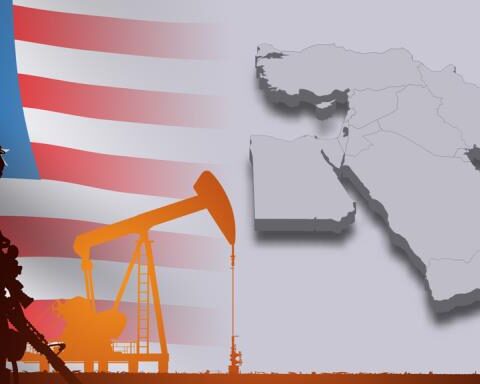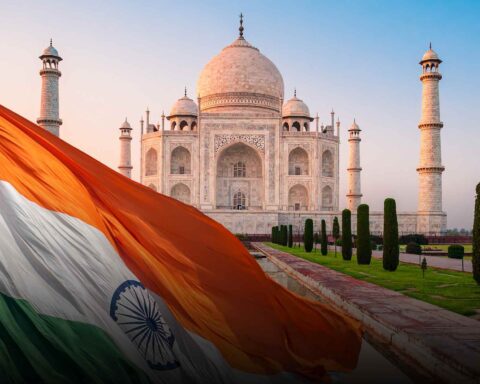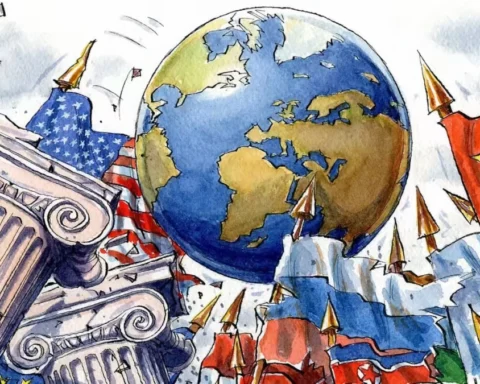The moral compass of our age can be measured not only by the wars that rage and the bombs that fall but also by the silences that follow. It is not the violence alone that defines the world we live in but the way that violence is narrated, the way victims are counted, and the way mourning is distributed. In this global distribution of empathy, the Western media has become the architect of a hierarchy of suffering, where some deaths are made into global tragedies and others are quietly absorbed into the statistics of war. This is not simply a question of coverage, it is about the manufacture of moral hierarchies, a census of human lives where the value of a body depends on geography, religion, and political convenience.
We saw this most recently in the spectacle of global mourning for Charlie Kirk, the conservative American commentator whose sudden death was met with headlines, tributes, and hours of media programming. Whatever one thinks of his politics, which were openly hostile to Muslims and immigrants—his life and death were treated as matters of universal concern. Compare this to Hind Rajab, a six-year-old Palestinian girl who called for help from beneath the rubble of her family’s car in Gaza, only to be silenced forever when the rescuers who came for her were themselves killed. Hind’s desperate voice should have shaken the world, but outside of Arab media, her name passed in silence, her story buried in the avalanche of “tragic but complicated” reports that have become the template for covering Palestinian suffering.
This contrast is not incidental; it reveals the structure of Western media. Judith Butler, in her writings on war and mourning, argues that not all lives are “grievable” in the same way. Some are already framed as losses before they die, while others must first prove their innocence to even deserve mention. Hind Rajab’s death was not presented as the death of an innocent child but as one more regrettable detail in Israel’s “war on Hamas.” Charlie Kirk’s death, however, needed no justification, no defence of his humanity—it was simply understood that his life mattered.
The selective outrage has older roots. After the attacks of September 11, the faces of the American dead were shown for weeks, their names repeated in ceremonies, their families interviewed with reverence. Contrast this with the invisible victims of the US wars in Afghanistan and Iraq, where hundreds of thousands of Muslims were killed but rarely named, rarely shown, rarely even counted. When a drone strike killed wedding guests in Kandahar or children in Yemen, coverage often described them as “suspected militants,” their innocence blurred by language that justified their deaths as inevitable byproducts of America’s “war on terror.” Edward Said, writing about Orientalism, warned us that the East is often represented as a backdrop for Western drama, not as a site of independent human life. In media coverage today, Palestinians, Afghans, Iraqis, Yemenis remain the backdrop against which Western political actors define their narratives of security and resilience.
One might argue that Western media cannot possibly cover every death, that practical limits exist. Yet this counter-argument collapses under the weight of selective intensity. Why is it possible to name every Western victim of terrorism, to document their biographies, to interview their families, but not to extend the same humanisation to Palestinians or Afghans? The issue is not quantity but priority. When Western citizens are killed, the machinery of empathy operates at full capacity. When Muslim civilians are massacred, the machinery of justification kicks in, explaining their deaths as complicated, unfortunate, or even necessary. This is why the deaths of Israeli civilians on October 7 received global saturation coverage, while the tens of thousands of Palestinians killed since then are spoken of in numbers, not names.
The language itself betrays the bias. Palestinians are “killed” or “die in strikes,” while Israelis are “murdered” or “slaughtered.” Muslim men are “suspects” or “militants” until proven otherwise, while Western soldiers are “heroes” even when their bombs devastate entire villages. This linguistic asymmetry teaches global audiences whom to mourn and whom to forget, who is innocent and who is guilty, whose death is an aberration and whose death is routine.
The political consequences of this moral hierarchy are immense. By normalising Muslim death, Western media creates a world where policymakers face no pressure to change course. If Palestinian children are not fully human in the eyes of global audiences, then their deaths impose no real costs on Israel or its backers. If Afghan civilians are invisible, then American drone wars can continue without moral reckoning. The result is what Butler calls a “differential distribution of vulnerability,” where some populations are endlessly exposed to violence but denied recognition as victims.
The hypocrisy becomes clearer when one recalls the global outcry for Ukraine. When Russia invaded, Western media produced endless stories of Ukrainian suffering, highlighting children, families, cities under siege. This humanisation was not wrong; it was necessary. But the question is why Palestinians, who have lived under occupation for decades and now under bombardment, are denied the same treatment. A BBC anchor once let slip the quiet part out loud: Ukraine matters because it is “civilised,” unlike Iraq or Afghanistan. This slip revealed what has always been true, Western empathy is racialised, culturalised, and deeply political.
Since Kirk’s death, even more grotesque developments have underlined this hierarchy. As Palestinians in Gaza continue to die of starvation under an imposed blockade, their suffering is often framed as a tragic inevitability rather than a deliberate war crime. Israel’s systematic targeting of journalists, over 170 killed—barely warrants Western headlines, while the death of a single Western reporter would dominate global cycles for weeks. At the same time, in India, Hindutva propaganda circulates videos portraying Muslims as demographic threats, echoing the same dehumanising logics that justify mass death elsewhere. The silence of Western outlets on these developments is not accidental; it is structural.
Silence is never neutral; it is always on the side of power. Every time Hind Rajab’s name is omitted, every time a Palestinian child is described as a number instead of a person, every time Israeli spokesmen are given prime-time slots to justify bombings, Western media confirms its role as an extension of power rather than a check on it. And yet, in their silence, they underestimate the memory of the oppressed. Palestinians continue to document their own suffering through phones, testimonies, and underground networks. Their resistance is not only physical but narrative, they refuse to be forgotten, even when the world tries to erase them.
The Muslim voice, then, has a responsibility. We cannot accept the global hierarchy that tells us some lives are sacred while ours are collateral. We cannot internalise the propaganda that makes us question whether our children deserve to be mourned. Our response must be to build our own archives of grief, our own platforms of memory, our own testimonies that break through the monopoly of Western media. As Said reminded us, the first act of resistance is to insist on speaking, to refuse the silence imposed upon us.
The census of human worth that Western media maintains is a moral disaster, but it is also fragile. Every testimony, every video from Gaza, every photo of a child like Hind Rajab chips away at the edifice of selective victimhood. The task before us is not simply to condemn bias but to demand a reordering of empathy, to insist that a Palestinian child is not a footnote, that an Afghan villager is not a statistic, that Muslim lives are not negotiable. Only then can we begin to imagine a world where mourning is not rationed according to politics, where grief is not assigned by geography, and where every life lost to violence is seen, named, and remembered as fully human.





